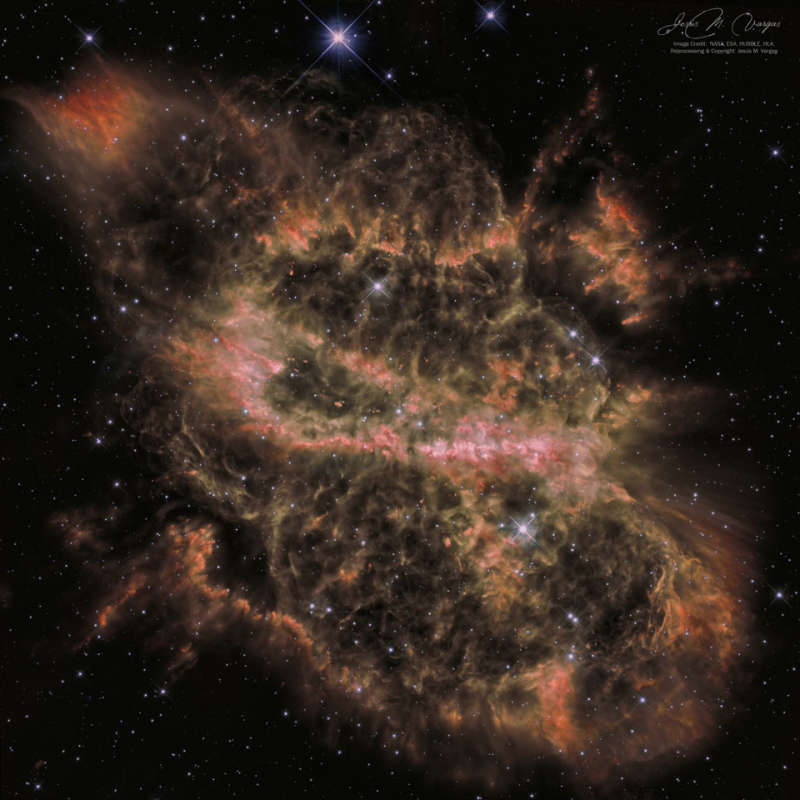
|
APOD: 2020 August 14 ┴ NGC 5189: An Unusually Complex Planetary Nebula

Explanation:
Why is this nebula so complex?
When a star like our Sun is dying, it will cast off its outer layers, usually into
a simple overall shape.
Sometimes this shape is a
sphere, sometimes a
double lobe, and sometimes a
ring or a
helix.
In the case of planetary nebula
NGC 5189,
however, besides an overall "Z" shape
(the featured image is flipped horizontally and so appears as an "S"),
no such simple structure has emerged.
To help find out why, the Earth-orbiting
Hubble Space Telescope
has observed NGC 5189 in great detail.
Previous findings
indicated the existence of multiple epochs of material outflow,
including a recent one that created a bright but distorted
torus
running horizontally
across image center.
Hubble results appear consistent with a hypothesis that the
dying star
is part of a binary star
system with a
precessing symmetry axis.
NGC 5189 spans about three light years and lies about 3,000 light years
away toward the southern constellation of the Fly
(Musca).
| << Yesterday | 14.08.2020 | Tomorrow >> |

|
January February March April May June July August September October November December |
| |||||||||||||||||||||||||||||||||||||||||||||||||||||||
NASA Web Site Statements, Warnings, and Disclaimers
NASA Official: Jay Norris. Specific rights apply.
A service of: LHEA at NASA / GSFC
& Michigan Tech. U.
Based on Astronomy Picture
Of the Day
Publications with keywords: planetary nebula
Publications with words: planetary nebula
See also:
- APOD: 2025 August 31 ┴ NGC 7027: The Pillow Planetary Nebula
- APOD: 2025 August 22 ┴ A Tale of Two Nebulae
- APOD: 2025 August 5 ┴ NGC 6072: A Complex Planetary Nebula from Webb
- APOD: 2025 July 29 ┴ A Helix Nebula Deep Field
- APOD: 2025 July 13 ┴ Planetary Nebula Mz3: The Ant Nebula
- APOD: 2025 June 9 ┴ Between Scylla and Charybdis: A Double Cosmic Discovery
- APOD: 2025 May 14 ┴ NGC 1360: The Robins Egg Nebula